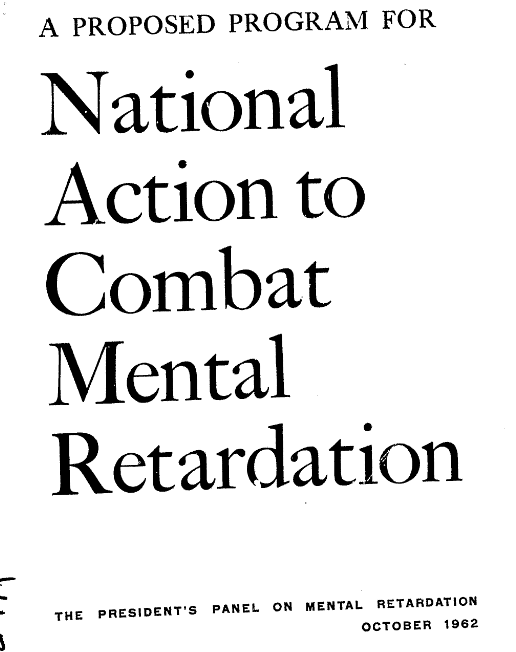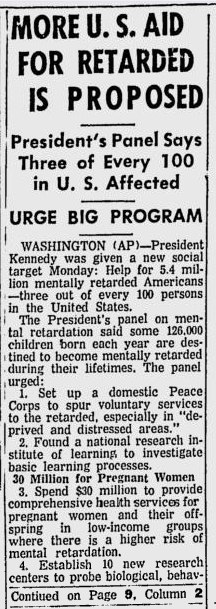President John F. Kennedy had a personal connection to institutionalization – his sister, Rosemary, was born with developmental disabilities and, after a disastrous lobotomy, lived for the rest of her life in institutions. After JFK’s experiences with the stigma around his sister’s condition and the shame his parents exhibited by hiding Rosemary from her siblings after her institutionalization, as President he would bring developmental disabilities into the public eye, and make the reenvisioning of services for people with developmental disabilities a cornerstone of his policies.

In 1961, Kennedy would convene a President’s Panel on Mental Retardation, and in October 1962, that group released a report entitled, “A Proposed Program for National Action to Combat Mental Retardation”.

“It is with these objectives in mind that I am proposing a new approach to mental illness and to mental retardation. This approach is designed, in large measure, to use Federal resources to stimulate State, local and private action. When carried out, reliance on the cold mercy of custodial isolation will be supplanted by the open warmth of community concern and capability. Emphasis on prevention, treatment and rehabilitation will be substituted for a desultory interest in confining patients in an institution to wither away.” – Special Message to the Congress on Mental Illness and Mental Retardation, February 5, 1963


